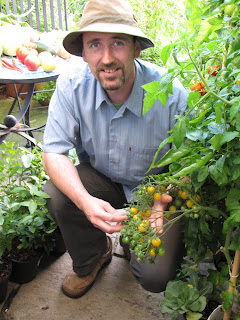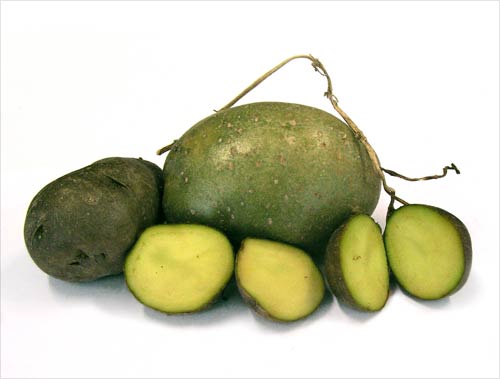Last weekend, my three year old daughter walked up to me wearing her beloved set of fairy wings and wielding her star tipped fairy wand. She glared into my eyes and delivered the following withering line: “Sweetie, I make forces of nature, YOU make pots and kettles! I work up in the sky and YOU work down in a ditch!"
The effect was to leave her dad sincerely alarmed on two fronts: first wondering where in hell she got that vocabulary range and second, to try and work out exactly what she was saying about my career. And she’d only just turned three last month!
Observing my state of shock, Her Outdoors pointed out that our fairy mad munchkin was merely quoting a line from Tinkerbell - one of her favourite Disney films. She’d just delivered word for word the dialogue from a segment in which one of the cattier fairies jibes Tinkerbell over her lowly status as a “tinkering fairy” rather than a higher ranking “garden fairy.”
 |
| "Sweetie, I make forces of nature!!" |
And this wasn’t the first time either that uncle Walt had delivered some pint sized invective by proxy. Almost as soon as she began to talk Plot 34’s Waterer of Everything began blurting out: “Go Away and Leave me Alone!” ...for no apparent reason. It took us a few weeks of embarrassment in shops and such before we worked out that she was quoting, tone perfect, an indignant Mowgli as he gave some lip to Baghera in the Jungle Book - or the “Jumble Bump” as she called it back then.
For his part her eight year old brother, Plot 34’s erstwhile Head of Secret Tunnels, has recently started speaking with a particular type of American affectation that sees him raising the last word of every sentence and leaving it hanging there. Those who remember American Pie and the “This one time....at band camp...” monologue will know exactly what I mean. We think he gets it from a particularly irritating television noisefest called iCarly.
What all this shows is just how much our little spongebabes absorb from popular culture – in particular from television and film. And while our three year old continues to follow me around as her brother once did, watering and tinkering in the garden, HST himself seems to have decided somewhere along the way that food growing is “uncool” or “cool....not.”
 |
| Keeping them interested in food growing is a losing battle |
The thing is that there’s bucketloads of food growing activities featured on children’s television and in children’s media every day, but unfortunately most of it appears to be featured on those worthy sorts of ultra pc programmes that kids like HST deem to be “definitely uncool.”
His pre primary school helped for a time with their efforts to win a Green Flag by setting up a vegetable garden. Back then our HST was proud that he know more than the other kids. But the nearest thing his new school – a sports oriented outfit – encourages to juvenile horticulture, is the planting of full backs. Indeed they recently had a large greenhouse removed.
In any case, these days the big battle is to get his nose out of the Nintendo DS handheld game system and to move him outdoors. Recently he missed the irony when I suggested that it might be a good idea to get a metal fitting and attach his Nintendo wing mirror style to his head so he wouldn’t have to stop playing while he walked down the street. “Cool!” he enthused.
When he recently asked if he could have his own "farm" because all his friends had one, my surging hopes were as rapidly shot down when it emerged that he wanted to join Facebook so he could play "Farmville," the game where users run a virtual farm. The irony is, that while he's on his Nintendo he's also quite often "farming" in a version of one of his favourite games, "The Sims," in which he can grow "virtual food."
When he recently asked if he could have his own "farm" because all his friends had one, my surging hopes were as rapidly shot down when it emerged that he wanted to join Facebook so he could play "Farmville," the game where users run a virtual farm. The irony is, that while he's on his Nintendo he's also quite often "farming" in a version of one of his favourite games, "The Sims," in which he can grow "virtual food."
 |
| Plot 34's eight year old former Head of Secret Tunnels - "Take me to your Nintendo." |
Last year the international computer gaming consultant Andrew Mayer told a major industry conference that farming games would be the biggest growth segment in the business: "In the future there will be only farming games," he predicted. In September it was estimated that "Farmville," Facebook's virtual farming game, had sixty two million active users - or one in ten Facebook users overall. Sixty two million virtual farmers?!! That's a lot of kids "growing" virtual good who could themselves do far more growing outdoors.
I’m not against computer games for children per se, because I believe they help develop problem solving skills and quick thinking but I can’t help but see the irony that I’m losing our plot’s Head of Secret tunnels to a pixelated farm.
In truth my initial idea of a family run allotment has all but evaporated by now. I persisted for a time in bringing HST along with me, partly on the traditional of the “character building” ethos. But the long faces, moans and slouchy dramatics that accompanied any tasks he was assigned, finally saw me give in, especially when Her Outdoors opined that the few weekly hours of allotment training was akin to modern day child abuse for a lad who was missing out on playing with his friends at weekends.
 |
| Down on the virtual farm |
Instead I’ve had to restrict his food growing education to short sharp bursts in the back garden where he at least maintains an interest in some aspects of our endeavours notably edible fruit – blueberries, grapes, strawberries, raspberries and apples. But at least that’s something.
But by now it's hard to get away from the fact that allotmenteering is still largely a pastime for men or childless couples over thirty five and is likely to remain so - unless Spongebob starts packing a secateurs in his square pants any day soon.
But by now it's hard to get away from the fact that allotmenteering is still largely a pastime for men or childless couples over thirty five and is likely to remain so - unless Spongebob starts packing a secateurs in his square pants any day soon.
But at least our three year old Waterer of Everything is still on the job. Almost.
Since watching Tinkerbell over and over, she’s decided she doesn’t want to be a garden fairy any more. She whacks me in the head with her star pronged magic wand and declares: “Look Daddy, I’m a tinker!”
The wonderful world of Disney for you.











.jpg)
















